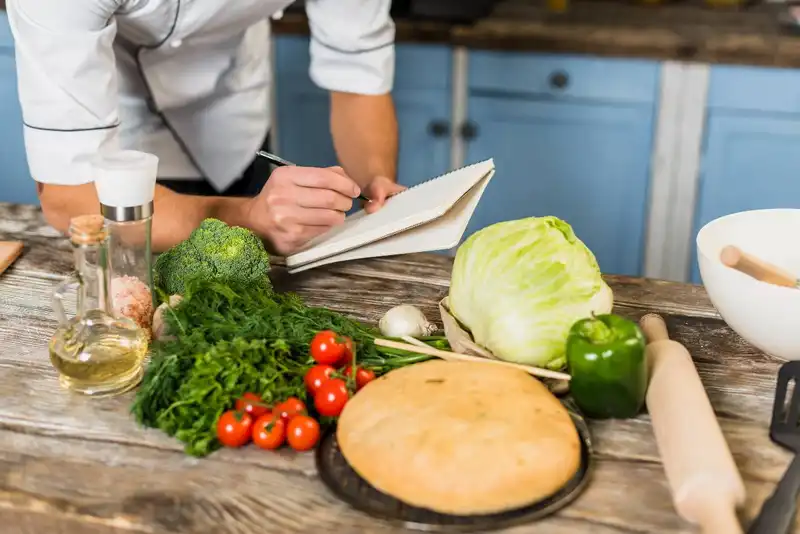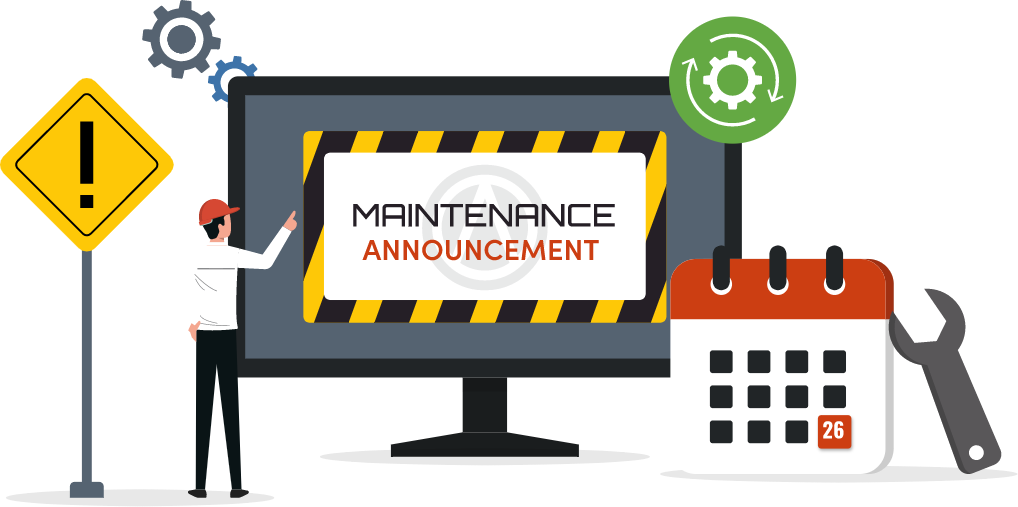Should I use paper or digital recipe templates?
Digital recipe templates are more efficient and scalable than paper. They allow real-time updates, integrate with inventory and POS systems, reduce errors, save time, and ensure consistency across staff and locations - essential for modern, profitable restaurant operations.
How to Create a Recipe Template for Your Restaurant
Overview
Running a restaurant is a balancing act between creativity and consistency. Guests expect their favorite dish to taste the same every time they order it, regardless of who is cooking or how busy the kitchen is. For many restaurant owners, this is easier said than done. Staff turnover, rising food costs, and the pressure to deliver quality at speed can make kitchen operations unpredictable.
This is where recipe templates come in. By standardizing how dishes are prepared, portioned, and plated, restaurant owners gain control over quality, reduce waste, and empower their teams with clarity. The result is a kitchen that runs smoothly, guests who receive consistent experiences, and margins that are protected against unnecessary losses.
Defining a Recipe Template

Before diving into the benefits and applications, it's important to clarify what a recipe template actually is. In the restaurant world, a recipe template is not just a list of ingredients and cooking steps. Instead, it's a structured operational tool that ensures every person in the kitchen can produce the same dish, in the same way, every single time. Think of it as the blueprint of your menu items - precise, consistent, and easy to follow.
Unlike a home recipe, which might allow room for improvisation or "a pinch of this, a dash of that," a professional recipe template leaves no guesswork. It accounts for exact ingredient measurements, portion sizes, cooking techniques, plating standards, and even allergen information. When properly created, it becomes a universal reference point for everyone in the kitchen, from the executive chef to the newest line cook.
This level of detail is particularly important in commercial kitchens, where multiple staff members may rotate through different stations and shifts. Without a standardized reference, one cook may prepare a dish differently than another, leading to inconsistencies in taste, presentation, and portioning. Over time, those inconsistencies don't just frustrate guests - they also inflate food costs and reduce profitability.
A recipe template fills this gap by serving as both a training tool and a quality control system. It ensures that creativity still has a place, but within a defined framework that protects your brand.
Transform Your Restaurant Operations Now!
Effortless Inventory Tracking with Altametrics!
Core Components of an Effective Recipe Template
A recipe template only works if it captures the right details. Too often, restaurant owners use overly simplified instructions that leave gaps, forcing cooks to make assumptions. These assumptions lead to inconsistencies, which can harm both guest satisfaction and profitability. To prevent that, every effective recipe template should include the following core components -
1. Dish Name and Category - Every recipe needs a clear title and menu category (appetizer, entree, dessert, etc.) so staff can locate it quickly.
2. Ingredient List with Units of Measure - List every ingredient with precise quantities - not "a handful of cheese," but "40 grams of shredded mozzarella." Standardizing units prevents costly overuse and keeps flavor consistent.
3. Preparation and Cooking Steps - Detailed, step-by-step instructions ensure cooks follow the same method regardless of experience level. Include prep details (e.g., dice onions to 1/4 inch) and cooking techniques (e.g., sear for 2 minutes per side).
4. Portion and Yield Size - State how many servings the recipe makes and the exact portion size per plate. This avoids over-serving and supports cost control.
5. Cost per Portion - Including food cost calculations helps owners price menu items accurately. Even a small variation can add up across hundreds of plates.
6. Allergen and Dietary Information - With growing dietary awareness, labeling allergens and possible substitutions is essential for guest safety and trust.
7. Presentation or Plating Notes - Food presentation is part of the brand experience. A quick sketch or photo ensures dishes are plated consistently, not left to chance.
By covering these components, a recipe template becomes a reliable system - not just a guide - for running smoother, more predictable kitchen operations.
The Financial Impact of Recipe Templates
For restaurant owners, profitability hinges on more than just strong sales. Behind the scenes, tight control over food costs can make or break the bottom line. Recipe templates are a critical tool for financial discipline because they directly connect kitchen operations to cost management.
One of the most significant benefits is portion control. When recipes specify exact measurements - for example, six ounces of chicken breast instead of "one piece" - staff are far less likely to over-serve. Even small overages, such as adding an extra ounce of protein or cheese, can add up quickly. Consider this- if an entree costs $0.50 more to make than planned, and it sells 100 times a week, that's $2,600 lost annually on a single dish. Multiply that across the menu, and the financial impact becomes substantial.
Recipe templates also make food cost calculations straightforward. By linking ingredient quantities to supplier pricing, owners can determine the exact cost per portion. This allows for accurate menu pricing, ensuring dishes are profitable rather than guesswork-driven. Without this level of clarity, many restaurants underprice items or fail to adjust pricing when supplier costs rise.
Waste reduction is another key area. When cooks know the precise quantities required, there's less trimming, over-prepping, or discarding of excess product. Data from the National Restaurant Association suggests that even a 2-3% reduction in waste can significantly improve margins in a low-profit industry.
Training and Consistency Tool

In a busy restaurant, staff turnover and varied experience levels are common challenges. Every time a new cook steps into the kitchen, there's a risk that dishes will be prepared differently, which can compromise both quality and guest trust. Recipe templates minimize that risk by acting as built-in training manuals.
For new hires, a well-structured recipe template shortens the learning curve. Instead of relying solely on shadowing a more experienced cook - which can be inconsistent depending on who is training - new staff have a clear, standardized guide. This makes onboarding faster, more reliable, and less stressful for both the trainer and the trainee. It also ensures that no critical steps are overlooked during busy service hours.
Consistency is another major advantage. Guests expect the same flavor, portion, and presentation every time they order a dish. Without templates, two cooks might prepare the same entree differently - one using slightly more sauce, another plating it differently. Over time, this creates unpredictability for customers, which can erode loyalty. A recipe template eliminates that variability by ensuring that every member of the kitchen team follows the same process.
Beyond training, templates also build confidence among staff. When cooks have clear instructions, they can focus on execution rather than guessing what's "close enough." This reduces stress during high-volume service periods and creates a more collaborative, predictable kitchen environment.
Digital vs. Paper Recipe Templates
When it comes to implementing recipe templates, restaurant owners often face a key decision- should they stick with paper-based systems or transition to digital formats? Both options can be effective, but each comes with its own strengths and challenges.
Paper Templates are the traditional choice. They're inexpensive, easy to create, and require no technical setup. Staff can keep printed recipe cards in binders or post them at prep stations for quick reference. For small restaurants with limited menus, paper is often a simple and practical solution. However, paper templates can quickly become outdated when ingredient costs change or recipes are adjusted. Updating requires reprinting, which can lead to confusion if multiple versions circulate in the kitchen.
Digital Templates, on the other hand, offer more flexibility and scalability. Using spreadsheets, restaurant management software, or POS-integrated recipe tools, owners can update recipes in real time. This ensures every staff member sees the same, most current version. Digital systems can also link recipes to inventory and supplier pricing, automatically calculating food costs and flagging discrepancies. This level of integration is especially valuable for multi-unit operators or restaurants with large, evolving menus. The drawback is that digital solutions may require training and upfront investment, which can be a hurdle for smaller teams.
Ultimately, the best choice depends on the size and complexity of the operation. Many owners start with paper and gradually shift to digital as they grow. What matters most is consistency- whichever format you choose, your recipe templates should remain accurate, accessible, and easy for your staff to follow.
Creating Your Recipe Template
Building a recipe template may seem daunting at first, but breaking it into clear steps makes the process manageable. The key is to create a format that is detailed enough to ensure consistency, yet simple enough that your staff will actually use it during daily operations. Here's a practical guide -
1. Define the Dish and Portion Size - Start by naming the dish and clarifying its portion size. This sets the baseline for both presentation and cost calculations. For example, is a "salmon entree" one 6-ounce fillet or an 8-ounce portion? Precision here avoids confusion later.
2. List Every Ingredient with Exact Units - Record each ingredient with standardized measurements - grams, ounces, or milliliters - instead of vague terms like "a pinch" or "a handful." Consistent measurements protect your margins and keep flavors uniform.
3. Document Preparation and Cooking Steps - Detail each step clearly. Note prep instructions (e.g., "julienne carrots to 3 inches") and cooking directions (e.g., "simmer for 12 minutes at low heat"). Simple, direct language ensures even inexperienced cooks can follow along.
4. Add Timing and Plating Instructions - Include cooking times and plating details so every dish looks and tastes the same. A quick photo or diagram can make this section even more effective.
5. Calculate Cost per Portion and Selling Price - Link ingredient quantities to supplier prices. This allows you to set menu prices with confidence and adjust quickly when costs fluctuate.
6. Record Allergens and Substitutions - Clearly state allergen risks and acceptable substitutions. This protects both guests and your staff while showing responsibility in food safety.
By starting with just a few of your best-selling menu items, you can build momentum and gradually expand templates to cover your entire menu. Over time, this system becomes the backbone of your kitchen operations.
Streamline Your Inventory. Order Smartly.
Start Simplifying Your Orders with Altametrics
Must-Read Content

Step-by-Step Guide to Creating Effective Recipe Cards for Your Restaurant

Creating Recipe Cards Templates That Work for Your Restaurant












